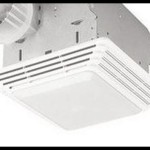Porcelain Bathroom Sink Replacement: A Comprehensive Guide
Replacing a porcelain bathroom sink can significantly enhance the aesthetics and functionality of a bathroom. Whether the existing sink is damaged, outdated, or simply doesn't suit the homeowner's current style preferences, a replacement project can breathe new life into the space. This article provides a detailed guide covering the essential steps involved in replacing a porcelain bathroom sink, from preparation and removal to installation and cleanup.
Before embarking on the replacement process, it is crucial to understand the different types of porcelain sinks available. Each type has its own installation requirements and aesthetic appeal. Undermount sinks, for example, are installed beneath the countertop, offering a seamless and easy-to-clean surface. Vessel sinks sit on top of the countertop, providing a more contemporary and visually striking look. Pedestal sinks stand alone and are supported by a pedestal base, often chosen for their classic elegance. Drop-in or self-rimming sinks are installed from above, fitting into a pre-cut hole in the countertop. Selecting the appropriate sink type is the first step in ensuring a successful replacement.
The selection process doesn't end with the sink type. The faucet and drain assembly also need consideration. Ensure that the new sink is compatible with the existing faucet, or plan to purchase a new faucet that complements the sink's style and functions properly. The drain assembly, including the P-trap, also needs to fit correctly with the sink's drain opening. Proper planning and component selection are crucial for a seamless installation.
Key Point 1: Preparation and Safety Measures
Prior to commencing the sink replacement, thorough preparation is essential. This includes gathering all necessary tools and materials, as well as implementing crucial safety measures. The required tools typically include a pipe wrench, adjustable wrench, basin wrench, screwdriver set (Phillips and flathead), putty knife or scraper, caulk gun, safety glasses, gloves, a bucket, and a towel or sponge. Materials include the new porcelain sink, plumber's putty, silicone caulk, Teflon tape, and possibly new supply lines, depending on the condition of the existing ones.
Safety should be the top priority. Begin by turning off the water supply to the bathroom sink. This is usually achieved by locating the shut-off valves underneath the sink. If these valves are not present or are malfunctioning, the main water supply to the house needs to be shut off. Once the water is turned off, open the faucet to relieve any residual pressure in the lines. Place a bucket underneath the pipes to catch any remaining water that may be present during disconnection.
Protecting the surrounding area is also important. Cover the floor around the sink with a drop cloth or old towels to prevent scratches or damage from falling tools or debris. Wear safety glasses to protect the eyes from splashes or small particles that might dislodge during the removal process. Gloves are recommended to protect the hands from dirt, grime, and potential contact with chemicals or sharp edges.
Careful examination of the existing plumbing connections is also beneficial at this stage. Note the type of connections and how they are assembled. This information will be helpful during the reassembly process with the new sink. Taking photographs of the existing plumbing configuration can also be a useful reference when reinstalling the drain and supply lines.
Key Point 2: Removing the Existing Porcelain Sink
The removal process varies slightly depending on the type of sink currently installed. However, the general steps remain consistent. First, disconnect the water supply lines from the faucet. Use a wrench to loosen the connections, being careful not to damage the pipes. Have the bucket in place to catch any water that drips out. Once the supply lines are disconnected, set them aside.
Next, disconnect the drain assembly. Start by loosening the slip nuts that connect the P-trap to the tailpiece of the sink drain and the drainpipe in the wall. Again, have the bucket ready to catch any water. Once the P-trap is removed, loosen the nut connecting the tailpiece to the sink drain. In some cases, the drain flange may be difficult to remove due to corrosion or mineral buildup. A penetrating oil can be applied to the threads to help loosen the connection.
With the plumbing disconnected, the sink itself can be removed. For drop-in sinks, use a putty knife or scraper to carefully break the caulk seal around the edge of the sink where it meets the countertop. Gently lift the sink out of the opening. For undermount sinks, the process may involve removing clips or screws that secure the sink to the countertop from underneath. Pedestal sinks require disconnecting the sink from the wall and lifting it off the pedestal base. Vessel sinks, being simply placed on the countertop, are usually the easiest to remove.
Once the sink is removed, thoroughly clean the countertop surface. Remove any old caulk or adhesive residue using a scraper or putty knife. Ensure the surface is clean, dry, and smooth before installing the new sink. If the existing countertop has any damage, such as chips or cracks, it should be repaired before proceeding with the installation.
Dispose of the old sink responsibly. Porcelain sinks are often heavy and bulky, so proper disposal is essential. Check with local waste management services for guidelines on disposing of large items. Some recycling centers may also accept porcelain for recycling. If the sink is in good condition, consider donating it to a local charity or reuse center.
Key Point 3: Installing the New Porcelain Sink
Installing the new porcelain sink involves several steps, beginning with preparing the sink itself. Install the faucet and drain assembly according to the manufacturer's instructions. Apply plumber's putty around the drain flange before inserting it into the sink drain opening. Tighten the nut underneath the sink to secure the drain flange in place. Connect the tailpiece to the drain flange, ensuring a tight and leak-proof connection.
For drop-in sinks, apply a bead of silicone caulk around the rim of the sink where it will contact the countertop. Carefully lower the sink into the opening, ensuring it is properly aligned. Press down firmly to create a good seal with the caulk. Remove any excess caulk with a damp cloth. For undermount sinks, apply adhesive to the countertop and carefully position the sink underneath, securing it with clips or screws as necessary. Pedestal sinks require attaching the sink to the wall with appropriate hardware and then placing it on the pedestal base. Vessel sinks simply need to be positioned on the countertop and connected to the drain assembly.
Reconnect the water supply lines to the faucet. Wrap Teflon tape around the threads of the faucet inlets before attaching the supply lines. Tighten the connections with a wrench, being careful not to overtighten and damage the fittings. Reconnect the P-trap to the tailpiece and the drainpipe in the wall. Ensure all connections are tight and secure.
After completing the installation, turn the water supply back on slowly. Check for any leaks around the faucet, drain, and supply line connections. If any leaks are detected, tighten the connections further or replace the Teflon tape or plumber's putty as needed. Once you are confident that there are no leaks, run water in the sink to test the drain function.
Finally, clean up the work area. Remove any tools, materials, and debris. Wipe down the sink and countertop with a damp cloth to remove any fingerprints or smudges. Allow the caulk to cure completely according to the manufacturer's instructions before using the sink regularly. Proper installation and careful attention to detail will ensure a long-lasting and functional porcelain bathroom sink.
Proper disposal of the old materials and cleaning the surrounding area are integral parts of the replacement process. Ensure all debris is cleared and the work area is left tidy. This contributes to the overall success of the project and ensures a clean, functional bathroom space.

How To Repair A Porcelain Sink Cosmos Surfaces

Gorgeous Shiny Things How To Repair A Porcelain Sink

Ceramic Porcelain Sink Repair True Value

Porcelain Bathroom Sinks At Com

Porcelain Sink Easy Installation Method

Bathroom Sink Guide

Kraus Elavo 16 3 4 In Oval Porcelain Ceramic Undermount Bathroom Sink White With Overflow Drain Kcu 273 The Home Depot

Drop In Bathroom Sink Replacement

Logmey 24 In Modern Bathroom Oval Vessel Sink White Porcelain Ceramic Art Basin H Lmp18007 The Home Depot

How To Patch A Porcelain Sink Himg Surface Repair
Related Posts







